While carbon nanotube technology (CNT) has generated widespread interest for applications ranging from semiconductors to medical, one area that is a focus of research at TE Connectivity is high-performance electrical cables. TE has been actively researching CNT for wire and cable, including cooperative efforts with universities and industry leaders, and has prototypes samples for evaluation. While there is still much progress to be made before CNT cables become main stream, we believe the technology is sufficiently advanced to meet specific niche applications such as satellites.
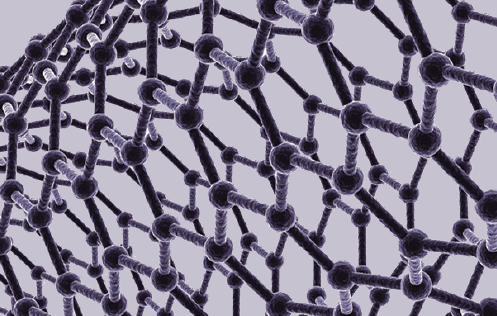
Cables using CNT components have the potential to become a disruptive technology, primarily due to weight savings compared to existing materials. In practical terms, these savings mean weight reductions of tens to thousands of pounds in platforms ranging from satellites to UAVs to manned military aircraft. For example:
Satellites: Launch costs to put a satellite in orbit can range from $5,000 to $50,000 per pound of payload. Any reduction in weight can significantly influence costs or allow extra weight for additional scientific and engineering equipment or more maneuvering fuel to extend the life of the mission.
UAVs: Lower weight means longer times aloft. Consider that the Global Hawk UAV contains about 850 pounds of cable. Using a CNT shield in place of a metallic one could save 300 pounds. An all-CNT cable might save an additional 100 pounds, cutting the overall weight from 850 to 450 pounds.
Manned aircraft: Weight savings translate into greater fuel efficiency or higher payloads.
The benefits of CNT cable goes beyond aerospace applications. Weight savings can also be important to ground vehicles and even soldier-worn equipment.
Nanotube Properties
A carbon nanotube is composed of a single atomic layer of carbon in a cylindrical configuration (Figure 1). The tubes can be single walled or multiple walled. The best electrical performance is found in single or few-walled nanotubes in a highly aligned structure.
The long aspect ratio of a single carbon nanotube, only a few nanometers in diameter but several millimeters in length, gives it remarkable properties in the nanoscale: tensile strength greater than steel’s, conductivity greater than copper’s, thermal dissipation greater than diamond’s, and resistance to corrosion and fatigue. Figure 2 gives typical properties of a single carbon nanotube.
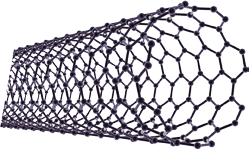
Figure 1. A carbon nanotube. (Source: TE Connectivity)
From Nanoscale To Macroscale
CNTs are grown by thermal processing and arranged into yarns for conductors and into tapes, sheets, and yarns for shields.
Bundling CNT strands into yarns or sheets to achieve practical sizes alters the properties of the material. A single carbon Nanotube has a conductivity thirty percent higher than copper but a yarn composed of a network of CNTs is orders of magnitude less conductive than copper. Figure 3 shows recent efforts in CNT yarn conductivity improvement since 2007.
Practical Applications Involve Tradeoffs
To date, CNT technology has been more about potential than practical solutions. For wire and cable, an ideal CNT-based product would have the same or better electrical properties in a significantly lighter, more rugged form. The reality today is that such an ideal is not yet achievable.
What is achievable today are CNT products that can offer significant weight reductions with electrical performance adequate to the application.
CNT Shields
CNT cables are now being actively developed for MIL-STD-1553B and IEEE 1394 applications for aerospace and satellite applications—with a transition from prototypes to production happening in the next few years. Initial IEEE 1394 cables will use CNT shielding, while
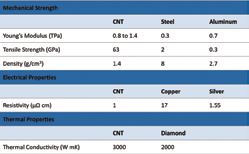
Figure 2. Carbon nanotubes are strong, highly conductive, and thermally efficient. (Source: TE Connectivity)
MIL-STD-1553B cables will likely be the first all-CNT construction.
CNT-based shields combine high shielding effectiveness with significant weight savings. A two-layer CNT tape offers roughly the same shielding as a copper braid at high frequencies—roughly 50dB at 4GHz—but weighs less than two percent of the braid it replaces.
The high resistivity of CNT shields, however, means poor shielding performance below 100MHz and an inability to provide protection against lightning strikes. For the double-braided cables common in aerospace applications, replacing one of the braids with CNT allows the remaining braid to handle low-frequency noise and lightning, while the CNT shield handles the higher frequencies. Weight savings are 25 to 30 percent for hybrid shield constructions.
All-CNT Cables
A variety of all-CNT cable types have been prototyped and evaluated. One type is a twisted-pair cable for MIL-STD-1553B databus applications. Conductors, using CNT yarns equivalent to a 26 AWG copper conductor, were covered with ETFE insulation and twisted into pairs. A single CNT sheet served as an overall shield.
As shown in Figure 4, performance of the CNT data bus cable is comparable to the copper version. A 1MHz MIL-STD-1553B signal through three meters of cable showed comparable performance for each cable type.
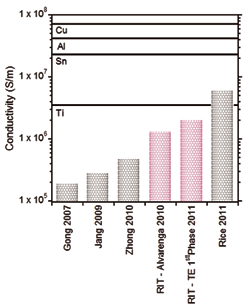
Figure 3. Macroscale CNTs still need additional improvements in conductivity. Image courtesy of TE Connectivity. (Source: TE Connectivity)
Further reductions in CNT yarn resistivity will be necessary before CNT conductors are practical for high-speed signals in longer lengths or for power. Prototypes of an RG-316-equivalent coaxial cable demonstrate the need for higher conductivity to make CNT cable practical for general-purpose applications. Both CNT shield-only and all-CNT constructions offer insertion losses higher than specified MIL-STD-17C.
Real-World Practicalities
As progress is made toward enabling the use of CNT materials in cables, two other issues deserve mention. The first is how to terminate CNT cables. CNT conductors are compatible with existing contacts and can be terminated with standard crimping techniques, albeit with slightly modified crimp tool settings. Testing of the mechanical strength of the crimps suggests that the CNT yarns fail before the crimp fails. Shields can be terminated to backshells with steel bands and other compression techniques. Tapes and yarns are also compatible with soldering, although they require modification of the CNT surface.
The second issue is moving from prototypes to production. CNT yarns, sheets, and tapes are available in commercial quantities, but challenges remain in volume production of long parts needed for cable. The production capabilities of CNT suppliers are rapidly increasing but the supply chain today typically has long lead times. Many applications today—such as semiconductors or composite enclosures—use CNTs measured in microns or millimeters. Cables represent a completely different scale from those applications, requiring tens of meters.
Ready For Prime Time?
As TE works with commercial and university partners to improve the conductivity of macroscopic CNT arrangements, we have also manufactured more than a mile of CNT cable for testing and evaluation. These prototypes suggest that CNT can be successfully integrated for use in cable shielding as well as conductors in relatively low-speed data cables, such as Databus and CANBus.
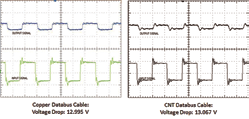
Figure 4. Copper and CNT databus cables can offer equivalent performance. Images courtesy of TE Connectivity.
Building on the knowledge gained from these initial, weight-sensitive applications, the industry will learn how to address cost, high volume demands, and electrical performance. Handling of CNTs in the form of yarns and tapes means that manufacturing processes for building cables need refinement to optimize throughput and improve yields.
For additional information, please visit http://www.te.com/chooser/aerospace-defense-marine/
and http://www.te.com/catalog/menu/en/23176

About the author
With a PhD in materials science, Stefanie Harvey is a Principal Scientist for TE Connectivity, Global Aerospace, Defense & Marine. She has expertise in nanotechnology, surface science, material interfaces and thin film processing. Stefanie has more than 19 years’ experience in high tech solutions, including semiconductor processing, biotechnology and defense. She was an adjunct professor at San Jose State University in the department of biomedical, chemical, and materials engineering since 1999. To learn more on carbon nanotube technology, connect with Stefanie at http://www.DesignSmarterFaster.com.

